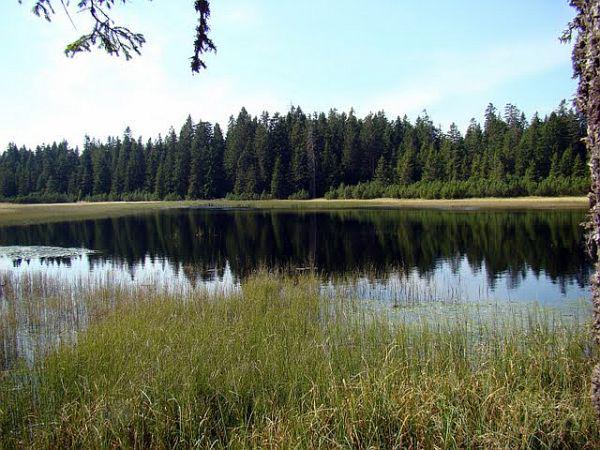
To the east of Maribor, Slovenia’s second largest town, lies Pohorje, a heavily wooded, sparsely populated mountain range. These days, it’s difficult to imagine any industry in a region known primarily for its unspoiled nature. But Pohorje was once the center of an important activity: the production of glass.
Beginning in the seventh century, glass workshops, known in Slovenian as glažute, began to emerge throughout the area. (The term comes from the German words Glas, meaning “glass,” and Hütte, meaning “hut”.) Pohorje was an ideal environment for the glassmaking workshops. The range contains copious amounts of quartz sandstone, which is the key ingredient of the glassmaking process. The abundant forests provided the wood needed for the furnaces, while mountain streams powered mills that ground the quartz sandstone sand into the fine powder.
At first, the workshops only produced glass for local needs, but over time, their products acquired a reputation for quality far beyond the region. Much of the know-how came from experts brought in from Bohemia, a region with a rich glassmaking tradition. Skilled local craftsmen -- from glass blowers to painters – also found work in the Pohorje worships. Their experience, combined with favorable local conditions, resulted in high-quality glass that was exported throughout Europe and even to Asia and North Africa. Pohorje glassware was used at the imperial court in Vienna. Many of the designs were intricately decorated; some of the Pohorje workshops even produced fine crystal.
Workers’ residences, inns, stores, and even churches sprung up along the larger glass workshops, transforming isolated settlements in the middle of the woods into lively villages. The largest workshop in the 19th century employed 252 people, 52 of whom were children.
The workshops often sprung up for a decade or two and the vanished. Just a few operated for more than a century, but each workshop would eventually be replaced by another in a different location. That changed with the advent of modern, industrial glassmaking techniques. Similar glassware could now be produced in factories more quickly and at a lower price. By the end of the 19th century, the number of glass workshops declined, and the last one closed its doors in 1908.
Today, glass objects from the Pohorje workshops, especially glass candlesticks, are prized antiques, a reminder of an important craft forever changed with industrialization. But the Rogaška Glassworks in eastern Slovenia continues the veritable tradition of Slovenian glassmaking and, like the Pohorje glassworks of centuries past, now exports its ornate glassware to clients around the world.

































































